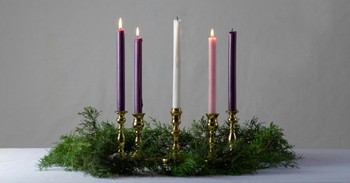Why and where does the Bible mention acacia wood? Does it have a particular significance? In Scripture, God shares the importance of His creations, including acacia wood. Acacia wood and other woods have been used for different purposes throughout history.
Where Does Acacia Wood Come From?
Acacia is derived from the Hebrew word shittim. Today, these trees, also known as wattles, are grown in Australia, the grasslands of North America, South America, Asia, and Europe. Varieties are also found in California, Hawaii, Texas, and Arizona. In Africa, the acacias are used as landmarks on the savanna.
The color of this tree can range from yellow to brown while changing to reddish tones as it ages.
This tree’s gum and bark have different purposes, such as having gum used in inks, medicines, and other items.
Leaves on this tree form a fern-like stalk. Sometimes with thorns at the base, they often have fragrant flowers, which may be white or yellow. Comparisons are made between the acacia and the mimosa.
Which Bible Verses Mention Acacia Wood?
The acacia tree is mentioned 29 times in the Bible—it appears in the books of Exodus, Deuteronomy, Isaiah, and Joel.
In Exodus, the Lord instructs Moses about receiving specific offerings to construct the tabernacle—valuable materials like gold, silver, and bronze. Blue, purple, and scarlet yarn were to be used. It also needed fine linen, goat hair, ram skin, leather, olive oil, spices, and certain stones were accepted to be placed on the ephod and breast piece. Acacia wood would be the primary construction material.
The Lord told Moses the exact measurements and details of how to build the ark of the covenant. “Have them make an ark of acacia wood—two and a half cubits long, a cubit and a half wide, and a cubit and a half high” (Exodus 25:10 NIV).
For the table, poles of acacia wood were to be made and overlaid with gold. The measurements were two cubits long, a cubit wide, and a cubit and a half high. Once again, the poles to carry the table were to be made of acacia wood and overlaid with gold.
When designing the tabernacle, upright frames of acacia wood were used:
“Also make crossbars of acacia wood: five for the frames on one side of the tabernacle, five for those on the other side, and five for the frames on the west, at the far end of the tabernacle.” (Exodus 26:26-27 NIV)
The Bible shares that the entrance to the tent would have a curtain with gold hooks and five posts of acacia wood overlaid with gold.
Exodus also shares that Moses instructed the Israelites to work for six days and make the seventh day their holy day with the sabbath rest to the Lord. Moses told the men and women everything the Lord commanded. Moses shared the specific offerings requested and asked everyone with skills and were able to come to help build the tabernacle.
Moses told the Israelites that the Lord had chosen Bezalel from the tribe of Judah to help with artistic designs. Bezalel and Oholiab, son of Ahisamak, would teach others how to work with wood and other elements.
In Exodus 36, we learn that the people had brought more than what was needed to help the workers. So, Moses ordered them to stop bringing anything else as an offering for the sanctuary.
Exodus 37 shares that Bezalel made the ark of acacia wood and followed detailed instructions. As directed, he made poles and posts. The table and the lampstand were created with precision. The altar of incense was made with acacia wood.
Exodus 38 tells that the altar of burnt offering was built with acacia wood. It was three cubits high, square in shape, five cubits long, and five cubits wide. Horns and bronze rings were added.
Isaiah 41:19 reminds us that God created all varieties of trees, listing the acacia as one of the many varieties: “I will put in the desert the cedar and the acacia, the myrtle, and the olive. I will set junipers in the wasteland, the fir and the cypress together” (NIV).
Why Was Acacia Wood a Good Material to Build Things With?
Acacia trees may have been one of the only types of trees growing in certain areas, such as the wilderness. Unlike some other trees, the acacia tree’s wood is very strong, dense, and resistant to decay from water and disease.
Acacia was readily available for use in building the sections of the ark, such as the tabernacle’s poles and parts. No other wood is listed as being used for these projects. The materials used to build would have needed to withstand elements such as time and weather.
What Do the Israelites Using Acacia Wood Tell Us about God?
Historians note that acacia trees would have been growing in the wilderness and easily accessible. These trees are strong and useful for building with wood. God knew everyone could bring some pieces of this wood to build parts of the tabernacle.
God can use anyone or anything to further His kingdom. God chooses the weak and the strong in people and wood. Therefore, we learn from the Israelites using this type of wood that no one is left without access to God. The choice to worship God is a decision to be purposefully made. Choosing the strongest wood for everything relating to the building of the tabernacle showed the people that God would be with them forever and the strong wood of the Tabernacle would also be with them always.
God uses unique details and specifics with all of His creations. God never wastes a single item. Everything can be used to lead others to know Him.
Where Else Does the Bible Talk about God Valuing Art and Craftsmanship?
From the beginning, when God made His creations for six days and rested on the seventh day, His craftsmanship is unlike any other. After sin entered, God began the process of redemption and restoration.
Although we are not perfect and fail to do His will, there is the opportunity for us to repent and be forgiven.
Some Scriptures about God valuing the gifts of art and craftsmanship are listed here.
- “And he has filled him with the Spirit of God, with wisdom, with understanding, with knowledge and with all kinds of skill—to make artistic designs for work in gold, silver and bronze, to cut and set stones, to work in wood and to engage in all kinds of artistic crafts.” (Exodus 35:31-33 NIV)
- “For we are God’s handiwork, created in Christ Jesus to do good works, which God prepared in advance for us to do.” (Ephesians 2:10 NIV)
- “The heavens declare the glory of God: the skies proclaim the work of his hands.” (Psalm 19:1 NIV)
- “Of what value is an idol carved by a craftsman? Or an image that teaches lies? For the one who makes it trusts in his own creation: he makes idols that cannot speak.” (Habakkuk 2:18 NIV)
- “Each of you should use whatever gift you have received to serve others, as faithful stewards of God’s grace in its various forms.” (1 Peter 4:10 NIV)
The Word of God is alive and relevant to every aspect of life, including craftsmanship and artwork. The gifts God gives to His people provide ways to share His love and glory.
Blessings,
Melissa Henderson
Photo Credit: Getty Images/sandsun

Melissa is the author of Licky the Lizard and Grumpy the Gator. Her passions are helping in the community and church. Melissa is an Elder, Deacon, and Stephen Minister.
Follow Melissa on Facebook, Twitter, Pinterest, and at https://www.melissaghenderson.
This article is part of our Bible resource for understanding the significance and meaning of biblical phrases and ideas. Here are our most popular Bible articles to grow in your knowledge of God's Word:
Promises of God in the Bible
Is "This Too Shall Pass" in the Bible?
What Was the Ark of the Covenant?
Top 10 Bible Stories for Kids
“Iron Sharpens Iron” in Proverbs 27:17
"Fearfully and Wonderfully Made" in Psalm 139
“Be Still and Know That I am God” in Psalm 46:10
"No Weapon Formed Against Me Shall Prosper" - Isaiah 54:17




